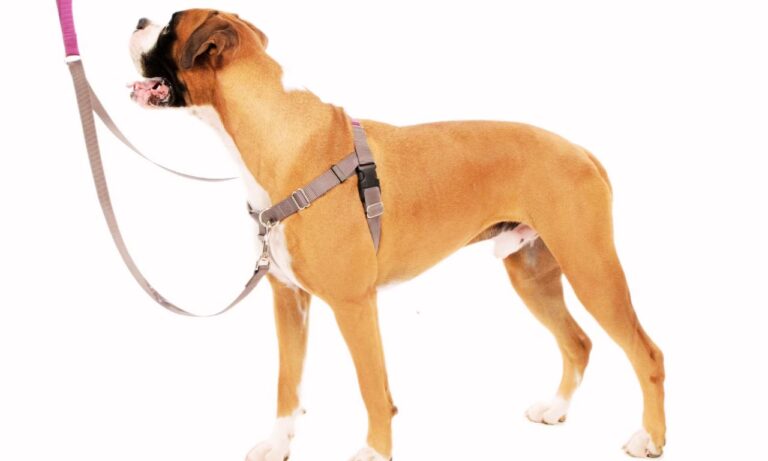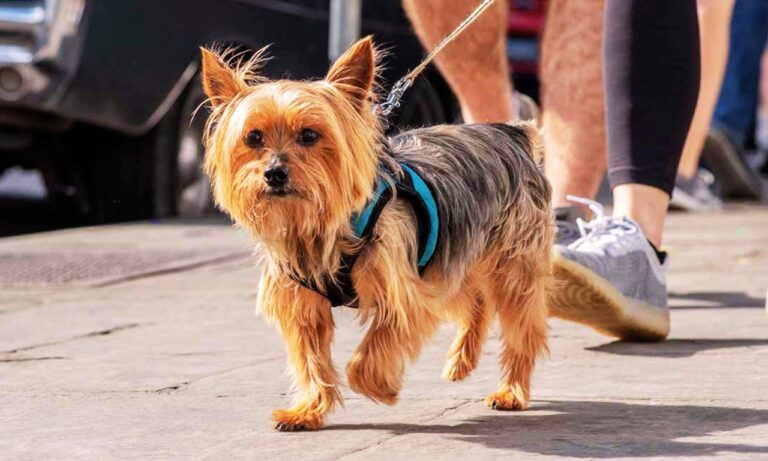German Shepherd Aging Chart: German Shepherds typically live between 9 to 13 years, with their aging process varying based on size, genetics, and health care. By 1 year, they reach adulthood and are fully grown, but they continue to mature emotionally and mentally until about 2 years. As they enter their middle age (6-7 years), their activity level slows, and signs of aging like joint stiffness may appear.
By 10 years, they begin to enter their senior phase, requiring more specialized care to manage health issues. Understanding your German Shepherd’s aging stages can help ensure they stay healthy and comfortable throughout their life.
Discover the ideal option by exploring what is the best collar material for a Bichon Frise to ensure your pet’s comfort and durability.
I’ve had the privilege of watching my German Shepherd, Bella, age gracefully. At 5 years, she was still a bundle of energy, but as she approached 8 years, I started noticing slight changes in her behavior—less jumping around and more resting. Knowing what to expect in terms of aging helped me make informed decisions about her care. Below is a detailed guide to the German Shepherd Aging Chart and what changes to expect at each stage.
Blog Highlights
ToggleGerman Shepherd Aging Chart: What Happens at Each Stage?
1. Puppy Stage (0–1 Year)
- Weight: 4.5 – 10 kg (10 – 22 lbs) at 8 weeks; 18 – 32 kg (40 – 70 lbs) at 1 year
- Height: 9 – 16 inches (23 – 40 cm) at 8 weeks; 22 – 24 inches (56 – 61 cm) at 1 year
- Development: German Shepherd puppies grow rapidly during this period. They undergo physical development and mental stimulation, learning basic commands and socializing with people and other animals.
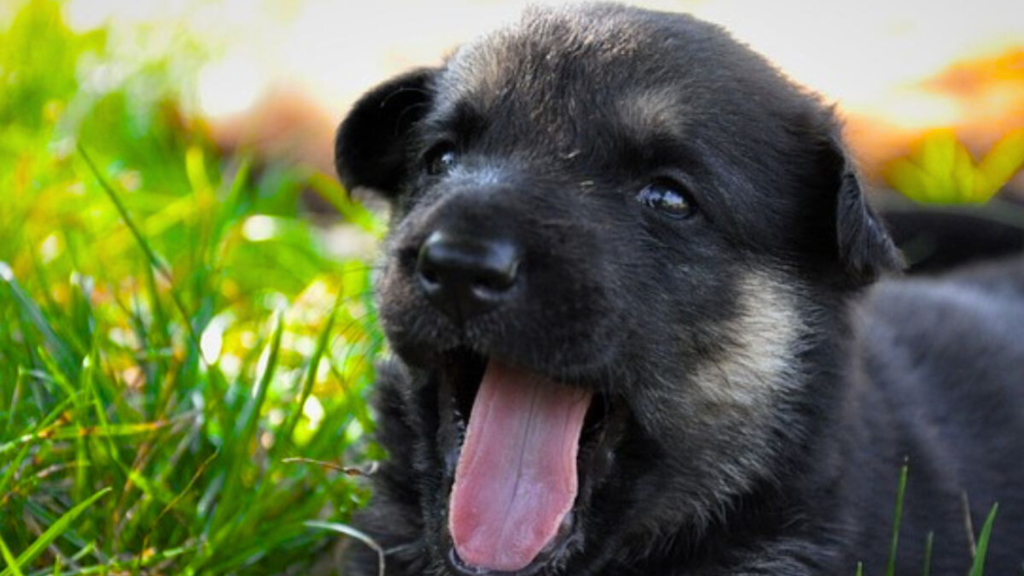
When Bella was a puppy, she went through rapid growth, almost doubling in weight during the first 6 months. At 1 year, she had reached her full physical size, though her emotional maturity took another year or so. German Shepherd puppies have an instinctive drive to work, and early training is crucial for shaping their behavior and providing proper mental stimulation.
2. Young Adult Stage (1–3 Years)
- Weight: 25 – 32 kg (55 – 70 lbs)
- Height: 22 – 24 inches (56 – 61 cm)
- Development: During this phase, German Shepherds reach their full physical and sexual maturity. They are at their peak energy levels, agility, and health. This is when your dog will be at their most active, playful, and alert, making them perfect for service work, obedience training, or agility sports.
Bella was incredibly energetic during her young adult years, with lots of playtime and training. This is a period of stability, as they have already fully grown and are emotionally mature, though still very much in their prime. It’s essential to continue regular exercise and mental stimulation during these years to ensure they remain balanced and happy.
Key Points for Young Adults:
- They may still act like puppies in terms of energy and playfulness.
- Training should focus on advanced commands and activities to keep their minds engaged.
- Watch for any early signs of joint issues, which can be more common in larger breeds like the German Shepherd.
3. Adult Stage (3–6 Years)
- Weight: 28 – 40 kg (60 – 88 lbs)
- Height: 24 – 26 inches (61 – 66 cm)
- Development: German Shepherds in this age range are typically in their prime. Their energy levels are slightly less intense than their younger years, but they are still active and highly intelligent. Their physical condition is at its peak, and they can maintain a healthy weight and build with proper care. This is the time when they’re best suited for active roles like working dogs, hiking companions, and family pets.
Bella, around 4–5 years old, had achieved a perfect balance of maturity and energy. She still loved running and playing, but her stamina had reduced slightly, and she was more inclined to relax in between activities. During this time, it’s important to keep an eye on their joints, as hip dysplasia or elbow dysplasia can sometimes start showing up due to the constant physical exertion.
Key Points for Adults:
- They are still highly active and need daily exercise, but they can start slowing down with age.
- Be mindful of joint health as they approach their late 5s and 6s.
- Regular vet checkups are vital to monitor their overall health.
4. Middle-Aged Stage (6–9 Years)
- Weight: 30 – 38 kg (66 – 84 lbs)
- Height: 24 – 26 inches (61 – 66 cm)
- Development: As German Shepherds enter middle age, you’ll start to see changes in their activity levels. They may still be playful, but they will generally require more rest. At this stage, some may develop signs of aging such as joint stiffness, and there might be some slowing down in their ability to run as fast as before. Their metabolism also starts to slow down, so it’s important to adjust their diet to prevent obesity.
Bella, at 7 years, started to show a bit of joint stiffness and needed longer recovery times after playtime. I also noticed that she wasn’t jumping onto the furniture as much as she used to. This stage calls for preventive measures, like maintaining a healthy weight and using joint supplements like glucosamine to manage the wear and tear on their bodies.
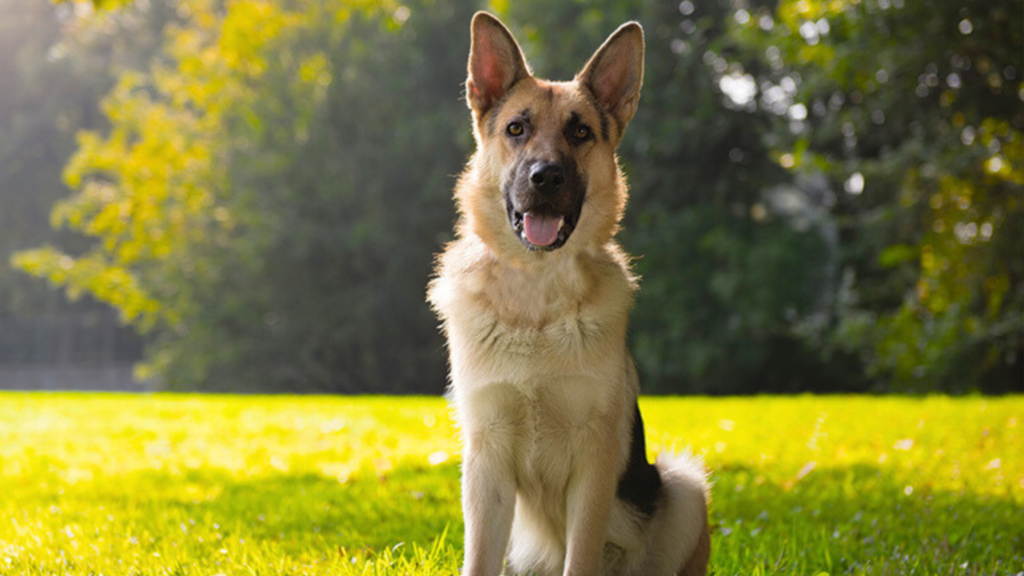
Key Points for Middle-Aged Dogs:
- Reduced energy levels and may not engage in intense exercise as often.
- Regular vet visits for checkups, including joint health, are crucial.
- Adjust their diet to match their slower metabolism.
5. Senior Stage (9+ Years)
- Weight: 28 – 35 kg (62 – 77 lbs)
- Height: 22 – 24 inches (56 – 61 cm)
- Development: As your German Shepherd enters their senior years, they will become less active and more prone to health issues like arthritis, cataracts, or heart disease. Their cognitive function may start to decline, and they might experience confusion or disorientation. Maintaining a low-impact exercise routine and continuing regular vet visits is crucial at this stage.
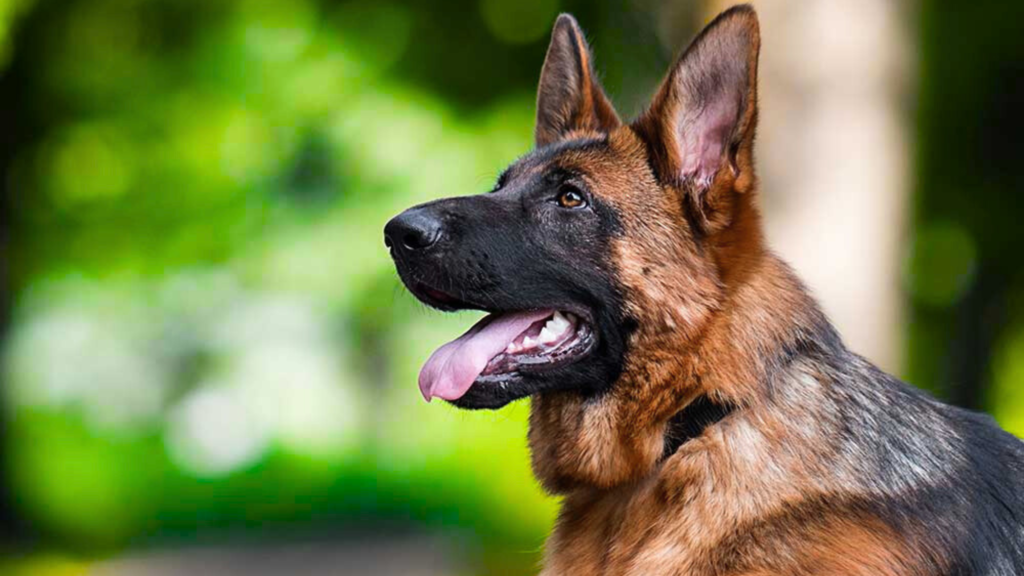
When Bella turned 9, I noticed she started to slow down quite a bit, especially when walking long distances. She no longer had the same energy levels or stamina, and she needed more time to rest between activities. This is when I introduced joint-friendly diets and supplements to keep her comfortable.
Key Points for Senior Dogs:
- Reduced mobility and energy levels.
- Mental health care becomes more important (e.g., cognitive dysfunction can affect older dogs).
- Special diets may be needed to maintain a healthy weight and joint function.
The American Staffordshire Terrier’s coat type is short, sleek, and easy to maintain with regular brushing.
How to Care for Your Aging German Shepherd
As your German Shepherd transitions through the aging stages, their care requirements change. Here’s how to adjust:
1. Maintain a Healthy Diet
A balanced, nutritious diet is essential for aging dogs. Senior German Shepherds require food that is easy to digest and supports joint health, including added omega-3 fatty acids for inflammation control. Bella’s diet was adjusted as she aged to include food specifically formulated for senior dogs, which helped manage her weight and keep her joints in good condition.
2. Provide Regular Low-Impact Exercise
While older German Shepherds won’t be as active as they were in their youth, regular, low-impact exercise like short walks and gentle play sessions is important to maintain muscle mass and joint health. Bella enjoyed shorter, slower walks as she got older, and I noticed that it helped her stay more agile.
3. Monitor Health Closely
As dogs age, they are more prone to health problems like hip dysplasia, heart disease, or arthritis. Regular vet visits become more important. Bella was monitored for joint issues, and as she got older, I had her checked for early signs of cognitive dysfunction syndrome (CDS). If you notice your dog showing signs of disorientation or confusion, talk to your vet about potential treatments.

4. Mental Stimulation
Older dogs still need mental stimulation. Bella enjoyed puzzle toys and training sessions, which kept her mentally sharp. Senior German Shepherds may not have the same endurance, but keeping their minds active helps prevent cognitive decline.
5. Comfortable Living Arrangements
Ensure that your older dog has a comfortable place to rest. As they age, German Shepherds may have difficulty jumping onto furniture, so a memory foam bed or ramp can make getting in and out of the car or onto the couch easier.

The best collar size for an American Staffordshire Terrier ensures a comfortable and secure fit for your dog during walks and training.
Conclusion
German Shepherds are amazing dogs, and understanding their aging process can help you ensure they live their best life at every stage. From their puppy years full of energy to their senior years where slower walks and more rest are needed, each stage of their life brings new joys and challenges.
By keeping track of German Shepherd Aging Chart and making necessary adjustments to their care routine, you can ensure that your German Shepherd remains healthy and happy for as long as possible.
To find out the what size collar for an Affenpinscher, ensure you measure your dog’s neck correctly for a perfect fit.
Whether you’re experiencing the boundless energy of a young adult or caring for a senior German Shepherd, every phase of life brings unique bonding opportunities. Watching your dog grow older is a rewarding experience, and with proper care, they will remain by your side for many years.


